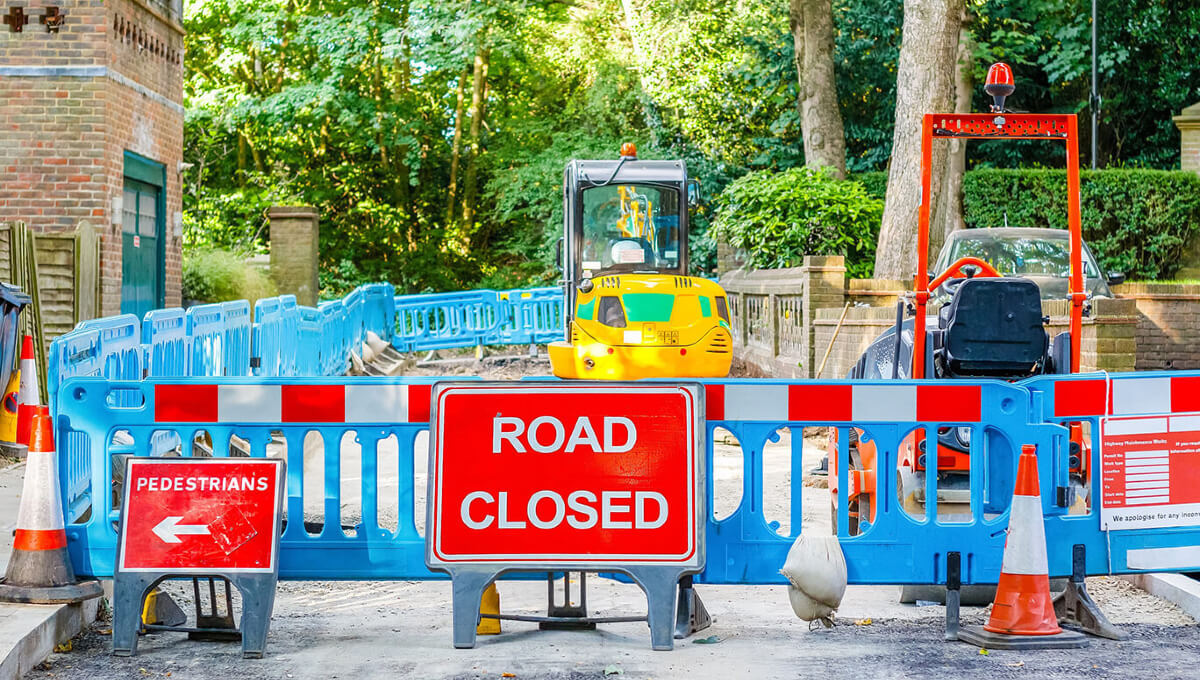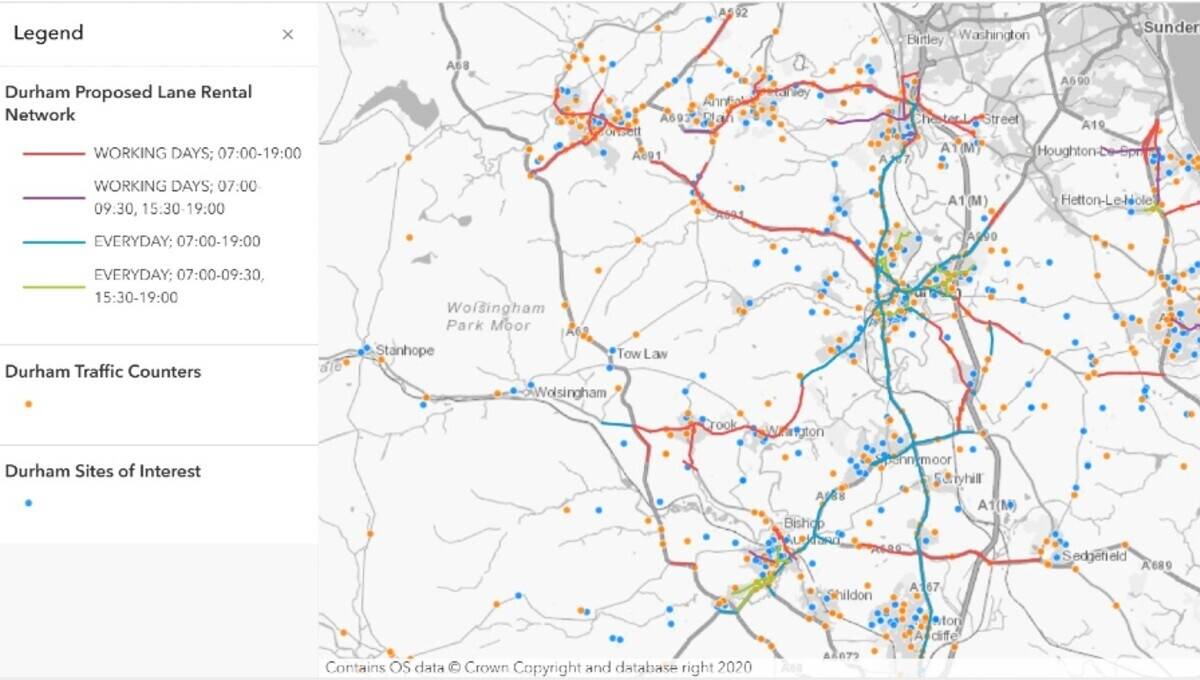The Department for Transport (DfT) has launched a new digital service for managing streetworks and providing a single view of a street and what is happening on that street. The aim of ‘Street Manager’ is to improve collaboration, increase the efficiency of streetworks, reduce risk, and the impact on affected communities.
At the heart of this system is an essential dataset; the National Street Gazetteer (NSG) which is the authoritative source for Unique Street Reference Numbers (USRNs).
Transparency improves services
Highways authorities and utility companies want to provide the best possible service for everyone who works on and uses our road networks, which means collaborating as much as possible on when and where works are taking place.
Street Manager will provide more transparency for everyone in the supply chain, from those large infrastructure organisations, to the highways authorities managing the right to dig, through to sat nav and map providers who can update their own services and make this information available to the travelling public.. Timely and accurate works data will help the public to avoid traffic hotspots, reduce congestion and emissions, and save time that might be otherwise wasted – thereby bringing value back into the economy.

Better collaboration as standard
From 1 July 2020, all local highways authorities and utility companies in England must use Street Manager to plan and notify new streetworks. In all, this may involve around 2.5 million notifications of works each year.
The total number of planned streetworks is likely to increase in the short term to medium term, as companies upgrade their supply networks for more sustainable infrastructure that can lead towards carbon neutrality. However, even more savings are guaranteed over time as those providers and related organisations will be able to reference nation-wide streetworks’ data with confidence – knowing authoritative USRNs are embedded in the system. In addition, Street Manager has been designed to solicit feedback that leads to a continuous improvement cycle, better servicing the needs of its users.
The National Street Gazetteer (NSG)
The NSG is the authoritative reference dataset of streets within England and Wales and is the primary source of the USRN. It contains over 1.48 million streets supported by 18.86 million rows of data and features. It is regularly updated by all 174 highway authorities, regional and national bodies, and utilities. It also includes Additional Street Data (ASD) such as structures, maintenance responsibility, road construction information and a catalogue of other features provided by local authorities to help the coordination of streetworks.
Street Manager users will be able to search for streets where they intend to carry out essential immediate repairs, undertake routine maintenance and plan major upgrades – all using the NSG. The results will reveal information about streets that are traffic sensitive, and have engineering difficulties and roads with special surfaces – all of which are noted against the USRN – and this will help them better plan and coordinate their activities. As time goes on, Street Manager will provide a consistent view of what has happened to the network, how, where, and when.
Paul Chandler, Product Manager: Street Manager at the DfT said: “The USRN is vital to us in every aspect of Street Manager. It’s what we use to raise every works and write every report – without it, we’d be taking a guess with postcodes or wasting time, scrolling around a map”
GeoPlace has another fundamental role in supporting street and road works activity across Great Britain. On behalf of the Department for Transport, it manages the Street Works Act (SWA) codes allocated to organisations that have the right to carry out streetworks. It is not possible to conduct works without being allocated a code by GeoPlace.
Nick Chapallaz, Managing Director of GeoPlace said “For a long time, we’ve wanted to see USRNs used in every system that references a street address – we are confident there will be direct increases in efficiency, reductions in risk, and better outcomes for the people affected by any works, of any kind. Street Manager should transform the management of street and road works, improve journeys for the public, and help businesses to make better plans that have a lower negative impact on productivity. GeoPlace is proud to be the Custodian of data that enables this to happen.”
JAG(UK) CEO David Capon said, “JAG(UK) recognises the pivotal role the NSG and ASD play in terms of underpinning the whole works management and coordination process. The new system hails a new era in terms of data management and the use of data in making better operational decisions. The system has huge potential and the whole community is working together to try and make the introduction as smooth as possible, any transition carries risk, but over the coming months we will be working with industry to ensure continuous development of processes and use”
Notes
About GeoPlace
GeoPlace LLP is a public sector limited liability partnership between the Local Government Association (LGA) and Ordnance Survey.
GeoPlace is a world class expert in address and street information management, working internationally as well as in the UK to help our partners and customers maximise the value of their spatial information for better decision making.
GeoPlace maintains a national infrastructure that supports the address and street information needs of the public and private sectors. Its work relies heavily on close working relationships with every local authority in England and Wales. This relationship has been developed over 15 years, to build the National Address Gazetteer infrastructure and National Street Gazetteer. Ordnance Survey develops the range of AddressBase products from the National Address Gazetteer and OS MasterMap Highways Network from the NSG. Both datasets underpin efficient and effective services, bringing direct service delivery benefits to users.
The Unique Property Reference Number (UPRN) and the Unique Street Reference Number (USRN) are the unique identifiers for every addressable location and street in Great Britain. They are created by local authorities who have the statutory authority to name and number every street and property and Ordnance Survey who identify objects on the landscape which may otherwise not attract an address.
These unique reference numbers link datasets together and share information with other organisations who also use them. They provide a comprehensive, complete and consistent identifier throughout a property's life cycle – from planning permission or street naming through to demolition.
See https://www.geoplace.co.uk.
Additionally, GeoPlace carries out several activities on behalf of the Department for Transport, including:
- administering the process for local authority changes to road classifications
- street works signposting service
- administration of TMA Performance Indicator (TPI) scorecard information – for more information on the scorecards contact [email protected].
About JAG(UK)
The Joint Authorities Group - JAG(UK) - represents the organisations responsible for the roads and streets of the United Kingdom.
JAG(UK) focuses on the daily operation, the coordination of works for asset or utility network management and other events taking place on the highway.
JAG(UK)'s member organisations are primarily local authorities and similar bodies whose principal activities are governed by highways, street, road and traffic management legislation. Their responsibilities include regulation of streets and roads for any purpose, with a view to maintaining public safety, asset integrity and the movement of people and goods.
JAG(UK) has six primary objectives and supports its members in achieving these.
- safeguarding the quality and effectiveness of highways as the major transport network
- developing a consistent and appropriate implementation of regulations, fairly balancing the legitimate needs of road users and works promoters of all types
- identifying and promoting good practice in all aspects of traffic and works coordination
- supporting the practitioners within member organisations in their personal professional development through the provision of guidance and timely, appropriate communication on important issues
- representing the interests and expert contributions of the membership in the wider public arena, including government, the Highway Authorities and Utilities Committees, National Traffic Managers Forum and other related bodies
maintaining an attitude of cooperation and pursuit of efficiency of operation of works, while remaining mindful of regulatory responsibilities.



